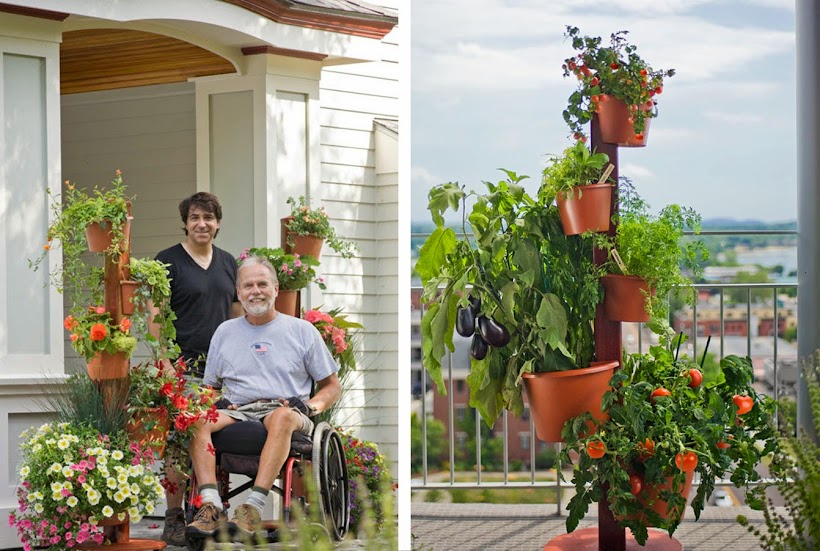Container gardeners in
the northern states have called it quits for the year. Today I’m writing to
encourage My Garden Post gardeners to make the transition to indoor gardening
and to share a few tips on keeping your MGP producing through the winter. Gardeners
in the frost-free states are just planting this month; I want southern
gardeners to get started the right way. Next week I’ll make suggestions on the
best soil, fertilizer and crop selection for My Garden Post.
I’ve grown a variety of
herbs on MGP for the past two winters with ease and good results. I’m fortunate
to have two large south facing floor to ceiling windows in my home office. I
spend a great deal of time in this room and enjoy the company and fragrance of
my plants. I bought the seven herbs in May and have grown them outside all
summer. It’s forecast to be in the 20s tonight; I assume they’re happy to be
inside.
 |
| Thyme, oregano, lavender, rosemary, sage and basil happy outside. |
 |
| Herbs happy to be inside |
Before you roll your My
Garden Post of fresh herbs inside for the winter, there are a few things to do
to make the transition successful. This is how I did it:
ü
I took one last harvest and cut them back
aggressively to 5-6 inches. This gave me a chance to look each planter over
carefully for insects. Most herbs don’t seem to have problems with the common
pests like aphids and whiteflies. Mine were pest free.
ü
I mixed a strong batch of fish emulsion (“Fish
Rich” my favorite) in a 2 gallon watering can.
With the drain holes still open, each planter was drenched and allowed
to drain until the dripping stopped. Inside, I’ll fertilize every 10-14 days.
o
A side note, “Fish Rich” doesn’t
have any objectionable odor. It’s great for growing organic crops inside.
ü
It took me a while to remember where I had put
the plugs for the planters back in May. The take-away here is to have a
designated place for all your MGP accessories. The plugs for the drain holes
fit snugly and they have to be in order to do their job.
o
Take special note of this next bit of advice.
As a group, herbs enjoy a consistently moist soil but care has to be taken not
to overwater them. Check for watering every day or two for the first couple
weeks. You’ll soon develop a schedule. I
seem to be watering every 4th or 5th day.
Join me next week; my
post will feature the basics:
- Choosing the best growing medium
- Fertilizer for organic crops
- Watering
- Exposure


No comments:
Post a Comment